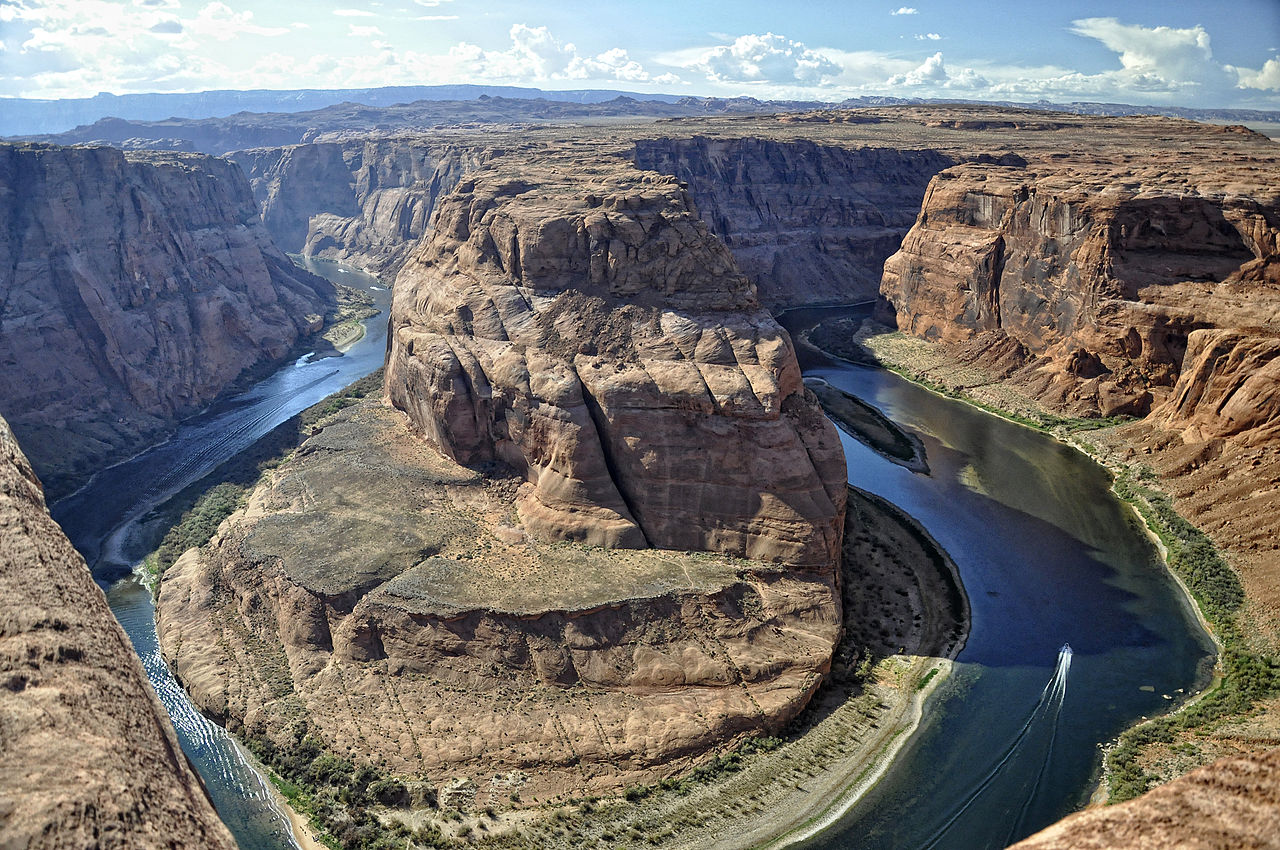
A view of the Colorado River at Horseshoe Bend in Page, Arizona. Photo by Paul Hermans / Wikipedia
The U.S. Supreme Court affirmed tribal ownership of water in the Colorado River as part of the long-running Arizona v. California case. But a retired reporter says the media fails to inform the public about this history:
In many articles published this year and last about drought and potential water shortages in Arizona, particularly involving the Colorado River, there's one thing the writers constantly omit: More than 51 percent of Arizona's annual entitlement to 2,800,000 acre-feet from the mainstream of the Colorado River is reserved for Indian reservations, under present law and court rulings. An acre-foot equals about 326,000 gallons. The reservations, with 2.6 percent of Arizona's population (170,237 of the 6,392,017 people in the 2010 census), have a right each year to almost 1,434,000 acre-feet compared to 1,366,000 acre-feet for the non-reservation population. This converts to 38 gallons of water for every reservation resident compared to 1 gallon per person for those living off reservations. That's correct: 38 to 1 in favor of reservation residents. Why do writers of these many articles fail to mention this astonishingly unequal apportionment of the state's Colorado River water?Get the Story:
Earl Zarbin: Native Americans own our water (The Arizona Republic 4/19)
Join the Conversation